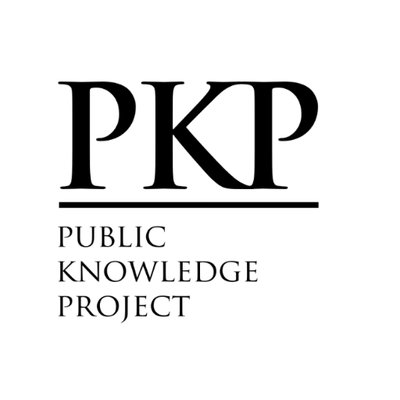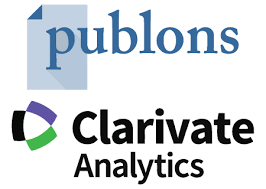Monetary policy and economic growth
A global and sector perspective in Tunisia
DOI:
https://doi.org/10.59051/joaf.v10i2.321Keywords:
Key interest rate, economic growth, inflation, long-term relationship.Abstract
In this paper, we empirically examine the impact of key interest rate on national and sector economic growth. Using Tunisian quarterly data in the period 2000-2018, we estimate, in the first step, the long term relationships through VECM analysis and, in the second we enrich our study by introducing variables of interaction. We find that key interest rate significantly and positively influences national and sector economic growth and negatively affects the inflation. In specific, our results show that the economic crisis and the approved credits respectively influence negatively and positively the link between key interest rate and Tunisian economic growth. Finally, we show that the impact of changes in monetary policy is weaker in crisis period and improved by the bank credit rises.
Downloads
References
Bernanke, B S., Jean, B and Piotr, E.(2005) .Measuring The Effects Of Monetary Policy: A Factor-Augmented Vector Autoregressive (FAVAR) Approach,. Quarterly Journal of Economics, 2005, v120(1,Feb), 387-422
BIKAI, J. L and KENKOUO, G.A (2015).Analysis and evaluation of the Monetary Policy Transmission Channels in the CEMAC: A SVAR and SPVAR Approaches. Munich Personal RePEc Archive, Paper No. 78227 ,12 January 2015
Binning, A. (2013). Under identified SVAR models: A framework for combining short and long-run restrictions with sign-restrictions. Working Paper 14, Norges Bank.
Clarida, R, Galí, J and Gertler, M. (2000). Monetary Policy Rules and Macroeconomic Stability: Evidence and Some Theory. The Quarterly Journal of Economics, 115, issue 1, p. 147-180,
Carlson, K.M. (1978), Does the St. Louis Equation Believe in Fiscal Policy? Federal Reserve Bank of St. Louis Review, pp. 13-19.
Cortet C. (1998). Structures financières et mécanismes de transmission de la politique monétaire dans les principaux pays européens. Note interne de la Banque de France, 1998, 14 P.
Davoodi, H.R, Dixit,S and Pinter,G .(2013). Monetary Transmission Mechanism in the East African Community: An Empirical Investigation. IMF Working Paper, February 2013
Dickey, D.A. and W.A. Fuller (1979): “Distribution of the estimators for autoregressive time series with a unit root,” Journal of the American Statistical Association, 74, 427-431.
Economics , 18(1): 23-35.
Engle R.F., Granger C.W. [1987], “Cointegration and error correction: representation, estimation and testing”, Econometrica, 55, p. 251-276.
Friedman, M. (1968). The role of monetary policy, American Economic Review, Vol. 58, No.1, pp. 1-17.
Gali, J. (2008). Monetary policy, inflation and business cycle: An introduction to the New Keynesian Framework. Oxfordshire: Princeton University Press.
Gerlach S andSmets . F.(1995).Output gaps and monetary policy in the EMU area1. European Economic ReviewVolume 43, Issues 4–6, April 1999, Pp 801-812
Hansen. H and Johansen.S (1993). Recursive estimation in cointegrated VAR model. Institute of Mathematical Statistics.Working paper N°1. University of Copenhagen.
Johansen S. (1988).Statistical analysis of cointegration vectors », Journal of Economic Dynamics and Control, 12, p. 231-254.
Johansen S. (1991). Estimation and hypothesis testing of cointegration vectors in gaussian vector autoregressive models. Econometrica, 59, p. 1551-1580
Kamgna.S.Y and Ndambendia.H(2008). Excess liquidity and monetary policy effectiveness: The case of CEMAC countries. Munich Personal RePEc Archive. Paper No. 9599, 30. June 2008
Kamaan, C, K. (2014). The effect of monetary policy on economic growth in Kenya. International Journal of Business and Commerce,. Vol 3, No.8, (April).
Kareem, R.O., Afolabi, A.J., Raheemand, K.A.and Bashir, N.O. (2013). Analysis of Fiscal and Monetary Policies on Economic Growth: Evidencefrom Nigerian Democracy. Current Research Journal of Economic Theory, Vol. 5, No. 1., (March), pp. 11-19.
Lucas, R. E. (1972). Expectations and the neutrality of money. Journal of Economic Theory, Vol 4, pp. 103-124.
Mankiw, G.N. and Taylor, M.P. (2007). Macroeconomics. (European Editioned.) Basingstoke: Palgrave Macmillan. 39.
Mankiw, G. (2006). The macroeconomist as scientist and engineer. Journal of Economic Perspectives, Vol. 20, No. 4, pp. 29-46.
Mervyn King (2000), Deputy Governor, Bank of England, Address: Monetary Policy: Theory and Practice, 7 January 2000
Monteil, P., Adam, C., and O’Conell, S. (2012). Financial architecture andthe monetary transmission mechanism in Tanzania. CSAE Working Paper,WPS, 03.
Mutuku, C and koech, E (2014). Monetary and Fiscal Policy Shocks and Economic Growth in Kenya: VAR Econometric Approach. Journal of World Economic Research Volume 3, Issue 6, December 2014, Pages: 95-108
Nubukpo K. K. (2002). L'impact de la variation des taux d'intérêt directeurs de la BCEAO sur l'inflation et la croissance dans l'UMOA. Paris : BCEAO, p36
Ondo Ossa A. (2005). Effets anti-keynésiens et Ajustement (le cas de la zone CEMAC). Economie et Gestion, n° Spécial.
Onyeiwu, C. (2012). Monetary policy and economic growth of Nigeria. Journal of Economics and Sustainable Development, Vol.3, pp. 7.
Rabanal , P.(2007).Does inflation increase after a monetary policy tightening? Answers based on an estimated DSGE model. Journal of Economic Dynamics & Control 31 (2007) 906–937
Sargent, T.J.(1972). Anticipated Inflation and the Nominal Rate of Interest. Quarterly Journal of Economics 86, p. 212225
Senbet, D. (2011). The relative impact of fiscal versus monetary actions onoutput: VAR approach. Business and Economics Journal, pp. 1-11.
Suleiman, D.M., Wasti, S.K.A., Lal, I.,and Hussain, A. (2009). An EmpiricalInvestigation between Money Supply Government Expenditure, Output andPrices: the Pakistan Evidence. European Journal of Economics, Finance andAdministrative Sciences, Vol. 17, pp. 60-68.
Vinayagathasan, T. (2013). Monetary policy and the real economy: AStructural VAR Approach for Sri Lanka. National Graduate Institute forPolicy Studies, Vol.13, No.13.
Downloads
Published
How to Cite
Issue
Section
License
Copyright (c) 2019 Hassen GUENICHI

This work is licensed under a Creative Commons Attribution-NonCommercial-NoDerivatives 4.0 International License.
Authors who publish with this journal agree to the following terms:
- Authors retain copyright and grant the journal right of first publication with the work simultaneously licensed under a Creative Commons Attribution License that allows others to share the work with an acknowledgement of the work's authorship and initial publication in this journal.
- Authors are able to enter into separate, additional contractual arrangements for the non-exclusive distribution of the journal's published version of the work (e.g., post it to an institutional repository or publish it in a book), with an acknowledgement of its initial publication in this journal.
- Authors are permitted and encouraged to post their work online (e.g., in institutional repositories or on their website) prior to and during the submission process, as it can lead to productive exchanges, as well as earlier and greater citation of published work (See The Effect of Open Access).






















